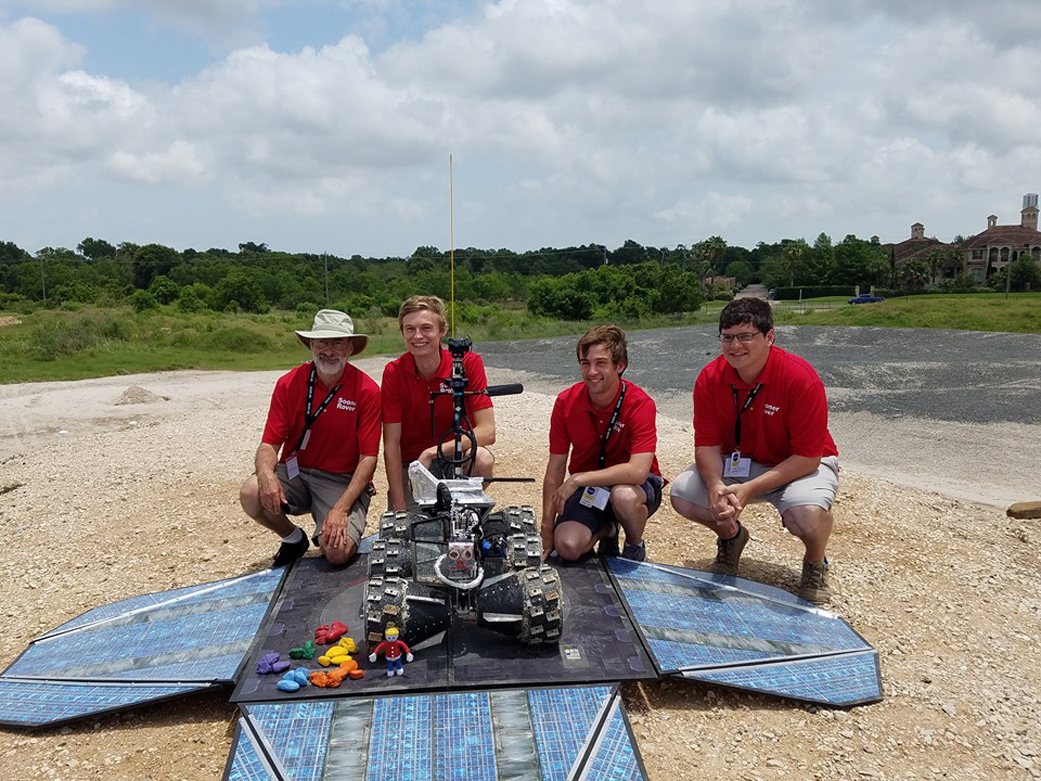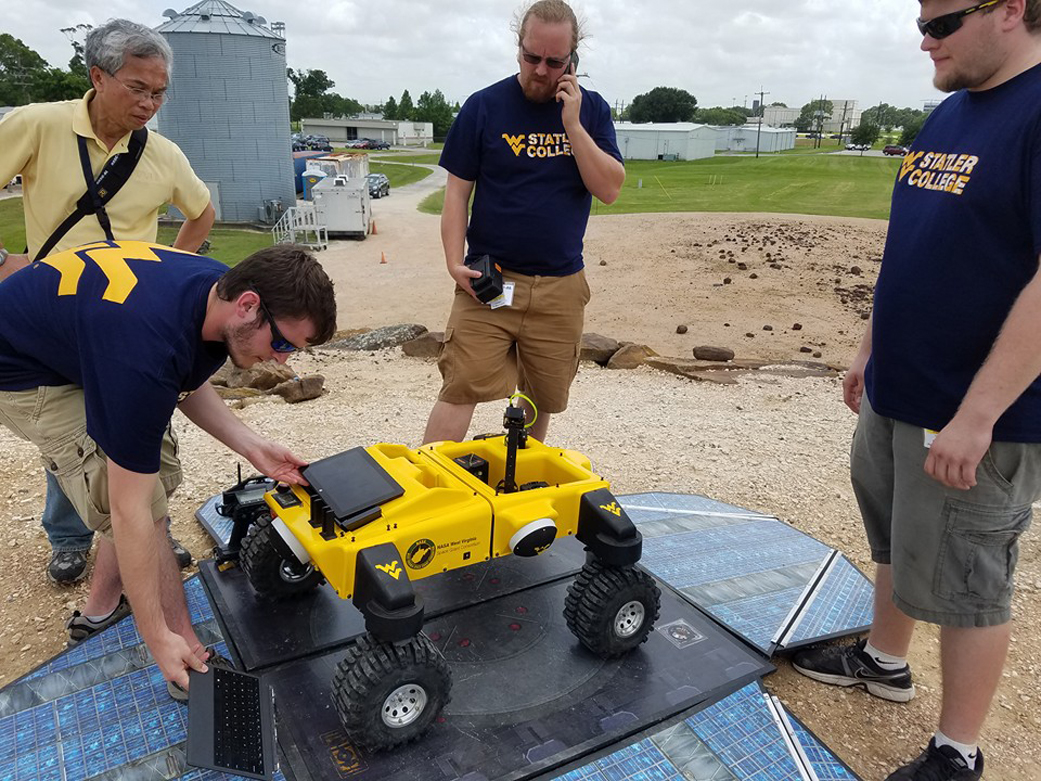Thirty-three university students and their faculty advisers spent almost a week at the “Rock Yard” at NASA’s Johnson Space Center in Houston testing eight months of hard work — an engineering project to design, build and demonstrate a robotic planetary rover.
The members of eight teams from as far away as Buffalo, New York and Long Beach, California, won the right to compete in NASA’s 2016 Revolutionary Aerospace Systems Concepts – Academic Linkage (RASC-AL) Exploration Robo-Ops competition.
In the end it was Rovie McRoverface from the University of Oklahoma that claimed first place and $6,000 in the competition. West Virginia University earned second place and $4,000, and the University of Utah came in third and won a $2,000 cash award.
“The winning team displayed incredible innovation,” said Pat Troutman, Human Exploration Strategic Analysis Lead at NASA’s Langley Research Center in Hampton, Virginia. “The rover from Oklahoma smashed all previous records by 50 percent. It was based on a Russian lunar rover from the 1960s, but with 21st century technology. It had a flawless performance and has opened a new paradigm for teleoperated rovers.”
The 2016 challenge marked the sixth year for the collegiate rover design competition, which is sponsored by the Advanced Exploration Systems division within NASA’s Human Exploration and Operations Mission Directorate.
Competing teams included:
- California State University, Long Beach
- University at Buffalo, New York
- University of California, Berkeley
- University of Maryland, College Park
- University of Oklahoma, Norman
- University of Utah, Salt Lake City
- University of Wyoming, Laramie
- West Virginia University, Morgantown
“NASA takes advantage of every opportunity, working with universities and industry, to further our journey to Mars, which will require robots working in tandem with humans,” said Troutman. “Robo-Ops pulls in tremendously innovative thinking from the university community in the area human-robot interdependence — an area that NASA needs as humans venture out beyond low Earth orbit.”
To meet the challenge the students had to design life-sized rovers that could climb, move over boulders, pick up rock samples and store them — all while navigating around the center’s outdoor test facility that simulates the kind of terrain that astronauts and robot vehicles will encounter on out of this world destinations such as the moon or Mars.
That may sound easy, but the rovers also had to be controlled remotely from the students’ home universities. The team from Oklahoma posted photos and explanations of its rover concept on its Facebook page, saying, “The rover’s arm (… in Houston) is controlled with an exact copy (which is in Norman). The operator simply places the copy arm into position and the rover’s arm mimics the position.”
The reasoning behind that part of the challenge was to make Robo-Ops as realistic as possible. Just like NASA controls its rovers on planetary bodies from mission control centers on Earth, each university entry had to be teleoperated based solely on the data and real-time video feeds being transmitted by the rovers’ on-board cameras. Each team’s camera feeds were streamed live on the NASA Robo-Ops website during their competition, allowing the public to view the action.
Outreach and public engagement, like Facebook posts, were also part of the challenge. Perhaps to that end some of the teams added a little personality to their creations — giving them names like Rovie McRoverface, Kokopelli, Steamboat, Pistol Pete, and Astraeus III.
They needed more than personality to take home a prize, though. Scoring was based on the ability to perform the tasks during the one-hour competition run, adherence to NASA requirements, a technical paper capturing their innovations and design, a poster session, and the public engagement piece.
Robo-Ops is led and managed by NASA Langley Research Center’s Space Mission Analysis Branch and the National Institute of Aerospace in Hampton, Virginia.






























